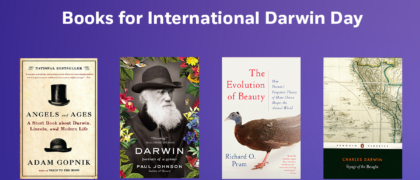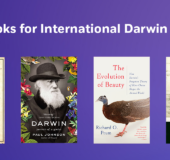Introduction
A common swift, in its lifetime, flies about two million kilometres; enough to fly to the moon and back twice over, and then once more to the moon. For at least ten months of every year, it never ceases flying; sky-washed, sleeping on the wing, it has no need to land.
The American wood frog gets through winter by allowing itself to freeze solid. Its heart slows, then stops altogether: the water around its organs turns to ice. Come spring, it thaws, and the heart kick-starts itself spontaneously into life. We still don’t understand how the heart knows to start beating.
At sea, dolphins whistle to their young in the womb; for months before the birth, and for two weeks afterwards, the mother sings the same signature whistle over and over. The other dolphins are quieter than usual for those weeks, in a bid not to confuse the unborn calf as it learns its mother’s call.
These things—everlasting flight, a self-galvanising heart, a creature who learns names in the womb—sound like fables we offer children. But it’s only that the Earth is so various and so startling that our capacity for wonder, huge as it is, can barely skim the edges of the truth.
The book is made in part of moments where we have collided with living things, in both joy and destruction, grandeur and folly. They are histories that reveal us to ourselves, and which find us at our most enthralled and unhinged: at our strangest. That, for instance, St Cuthbert, a seventh-century monk from Lindisfarne, was said to have enlisted the help of sea otters when he got wet in the ocean: they warmed his feet with their breath, and dried them with their fur. That a blind farmer in Suriname once rescued a baby capybara and trained it to be his seeing eye. It was noted in the
Guinness Book of Records: guided by what is essentially a vast guinea pig, a man once stepped bravely out into the darkness of the world, and was led home.
This book is, too, a litany of the vivid mistakes and wild guesses upon which our scientific knowledge has been painstakingly built. For example: because we used to hunt beavers for their testicles on the grounds that they were a delicious aphrodisiac, we theorised for hundreds of years that, if chased, the animal would bite off their own genitals in order to forestall the pursuit. They would ‘throw them in [their pursuers’] path’, a Roman text from the year 200 CE claimed, ‘as a prudent man who, falling into the hands of robbers, sacrifices all that he is carrying, to save his life, and forfeits his possessions by way of ransom.’ Medieval bestiaries were therefore populated with images of furious beavers castrating themselves with their incisors.
Similarly, the ancient conviction that ostriches could digest iron meant that Arabic and European manuscripts were scattered with drawings of the bird with a horseshoe or a sword clamped hungrily in its beak. It became a symbol of resilience, digestive and otherwise. The theory was tested and recorded by the great ninth-century Iraqi naturalist al-Jahiz, who reported that the ostrich happily ate burning pieces of metal, but on devouring a pair of scissors, sliced itself open from the inside. We also believed that ostriches could hatch their eggs merely by glaring at them with great and unswerving intensity.
The old errors are fantastical and fantastic, and revealing of human hopes and anxieties; our terrors, our desires for greater digestive health and sexual prowess, our quest for magical solutions to relentlessly human problems. And every scientist you meet will tell you: there is no reason to believe that we haven’t got just as much wrong today, in different forms, as we have done in every generation up to now. It would be worth our holding that knowledge, tight and urgent, as we go; our learning, though vast, is an infinitesimally small fraction of what exists.
We risk losing all this magnificence before we begin to understand it. Every species in this book is endangered or contains a subspecies that is endangered—because there is almost no creature on the planet, now, for which that is not the case. In the last fifty years, the world’s wildlife has declined by an average of almost seventy percent. We have lost more than half of all wild things that lived.
We are Noah’s Ark in reverse: it is as if we are raging through the bowels of the boat, setting fire to the stables, poisoning the water. Faced with such destruction at such pace, acquiescence becomes impossible. The time to fight, with all our ingenuity and tenacity and love and fury, is now.
Copyright © 2024 by Katherine Rundell. All rights reserved. No part of this excerpt may be reproduced or reprinted without permission in writing from the publisher.










